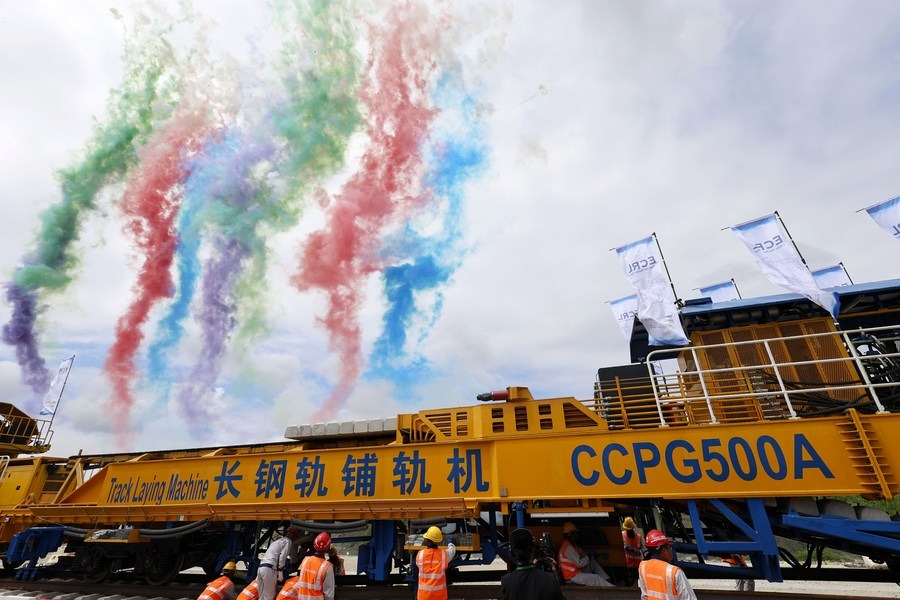DPRK fires projectiles, denouncing US drills
By Pan Mengqi | China Daily | Updated: 2019-08-07 09:15

In an apparent show of protest against the ongoing joint military exercise by Seoul and Washington, Pyongyang fired two short-range projectiles into its eastern waters on Tuesday, the fourth such launch in less than two weeks.
According to a statement from the Republic of Korea's Joint Chiefs of Staff, the projectiles, presumed to have been short-range ballistic missiles, were launched at 5:24 am and 5:36 am local time on Tuesday. Each projectile was launched from the Democratic People's Republic of Korea's southwestern county of Kwail. Both flew around 450 kilometers before splashing into the East Sea.
The first recent launch was on July 25 when Pyongyang fired two rounds of a new type of ballistic missiles. It hadn't launched any missiles in the previous 77 days. It then conducted two additional launches on July 31 and Aug 2.
Media from the ROK said that all three previous launches involved a new type of short-range ballistic missiles, known as the DPRK version of Russia's Iskander code-named "KN-23". But the DPRK said the last two tests, conducted on July 31 and Aug 2, involved a new "multiple launch guided rocket system".
Tuesday's firing also came a day after the ROK and the United States began their combined military exercise as scheduled, despite the DPRK's repeated warnings against it.
In a fresh warning after the firing on Tuesday, DPRK's Foreign Ministry said in a statement that the ROK-US joint exercise violated a series of agreements that it had signed with the US and the ROK, adding that it could seek "a new road" other than engagement.
"Seoul and Washington authorities remain outwardly talkative about dialogue. But when they sit back, they sharpen a sword to do us harm," the ministry said, according to the DPRK's state Korean Central News Agency in an English dispatch.
"If the US and the ROK authorities trust to luck, disregarding our repeated warnings, we will make them pay heavy price which will in turn make them very much difficult," it added.
Analysts said the tests are conducted to pressure Washington to offer more concessions.
"The negotiations have been at a standstill since the no-deal summit between US President Donald Trump and DPRK top leader Kim Jong-un in Hanoi, Vietnam, in February, and after an impromptu meeting between the pair at the inter-Korean border village of Panmunjom in June, the situation is still stalemated even if the two sides agree to resume working-level talks," said Wang Junsheng, an associate research fellow at the National Institute of International Strategy under the Chinese Academy of Social Sciences.
These type of firings are not threatening, but rather intended to get attention and to add to Pyongyang's bargaining chips in negotiations, Wang said.
"However, the situations has hardly changed at the moment," Wang said, as he explained that no one wants to be the first to make concessions and break the deadlock.
"Unless Washington is willing to back down on sanctions and Seoul is willing to scale down its military dependence on Washington in exchange for Pyongyang's disarmament in the upcoming working-level talks, the standoff is likely to continue for some time," he added.
























